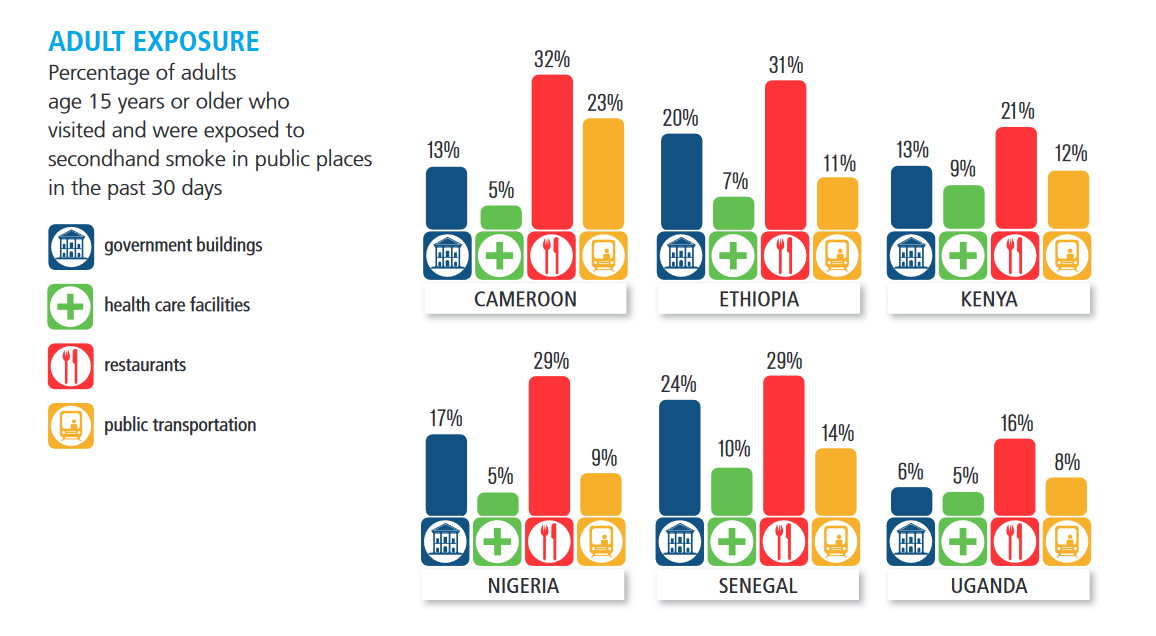You are here
Protecting People from Tobacco Smoke: Highlights from Africa
Every year on May 31, the World Health Organization (WHO) and global partners recognize World No Tobacco Day. This year’s focus is centered on the dangers of tobacco smoke on lung health—from chronic respiratory disease to cancer—and highlights the importance of lung health on the overall health and wellbeing of people globally. Tragically, approximately 8 million people die from tobacco use worldwide each year, including about 1.2 million people who die from exposure to secondhand smoke.
 The CDC Foundation is committed to protecting people from the harmful effects of tobacco use and secondhand smoke exposure to save and improve lives around the world. As a partner in the Bloomberg Initiative to Reduce Tobacco Use, the CDC Foundation builds public-private partnerships to enhance governments’ capacity for tobacco control surveillance and monitoring.
The CDC Foundation is committed to protecting people from the harmful effects of tobacco use and secondhand smoke exposure to save and improve lives around the world. As a partner in the Bloomberg Initiative to Reduce Tobacco Use, the CDC Foundation builds public-private partnerships to enhance governments’ capacity for tobacco control surveillance and monitoring.
The CDC Foundation, in partnership with the Centers for Disease and Prevention (CDC), WHO, and other international partners work with countries to implement the Global Tobacco Surveillance System (GTSS), which is comprised of the Global Adult Tobacco Survey (GATS), the Global Youth Tobacco Survey (GYTS) and Tobacco Questions for Surveys (TQS). GTSS provides globally standardized data, such as that shown in the chart, to track adult and youth tobacco use across the world, with the intent for countries to use the data to effect change through tobacco control policies and programs.
For example, Uganda used GTSS data to highlight the need for a stronger tobacco control law. Using the data, the country was able to enact a law requiring 100 percent smoke-free public places as part of their Tobacco Control Act of 2015. Policies such as these can protect people from the harmful effects of tobacco use and secondhand smoke exposure, ultimately reducing the burden of tobacco-related illness and death.
To highlight tobacco use and key indicators, such as secondhand smoke exposure, from countries in the African Region, CDC and the CDC Foundation recently released the GTSS African Region Atlas, funded through a grant from the Bill & Melinda Gates Foundation. The publication presents data for 34 countries with GYTS national surveys, 21 countries with GYTS sub-national surveys and six countries with GATS national surveys. Adult exposure to secondhand smoke in public places is presented in the chart. For a full list of indicators by survey and country, visit the GTSS African Region Atlas site.
On this World No Tobacco Day, the CDC Foundation is grateful to work with CDC, WHO and other global partners to support countries in monitoring progress toward reducing tobacco use. And, our team is pleased that GTSS data can help countries implement and enforce tobacco control policies and programs to protect the public from the harmful effects of tobacco use and secondhand smoke exposure.

